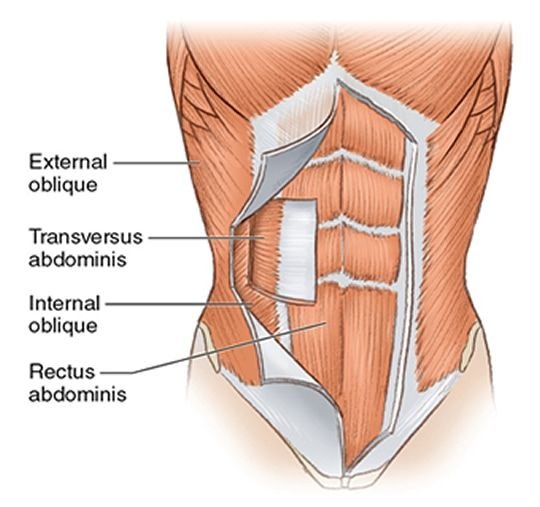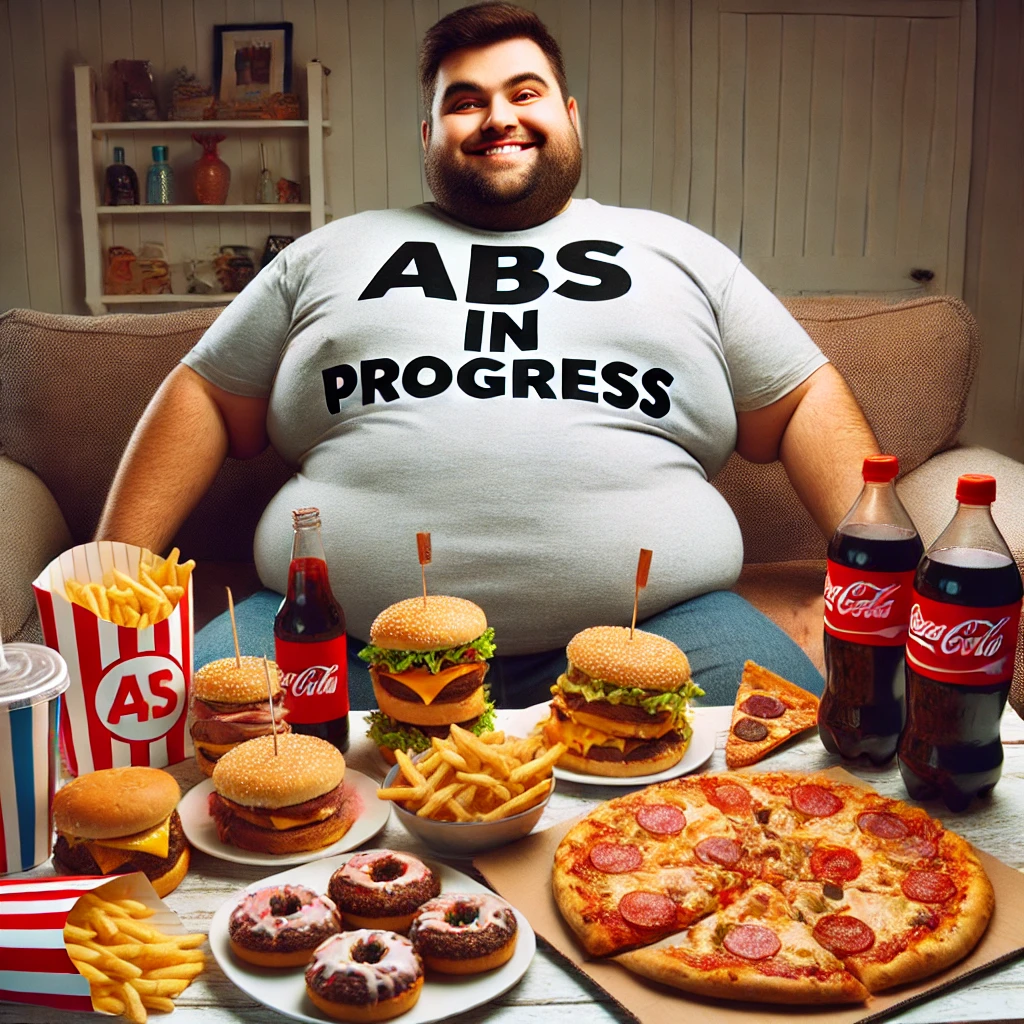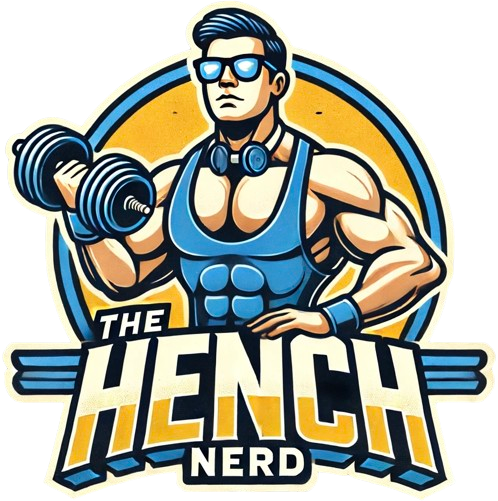Introduction: The Real Approach to Ab Training
In this article, we’ll dive into the best ab workouts at the gym, and answer the crucial question: how often should you train abs to see real results?
Why do so many people dedicate hours to ab workouts at the gym but fail to see the results they want? For years, ab training has been surrounded by myths and misconceptions, with promises of “quick-fix” solutions or shortcuts that rarely deliver.
But achieving visible, strong abs isn’t about doing endless crunches or hammering your core daily—it’s about treating abs like any other muscle in your body, with a focus on effective exercises, the right frequency, and consistent intensity. if you haven’t read my long article on how to get abs, I’d recommend you check it out first.
Understanding Your Core Muscles – More Than Just Aesthetics

Many people train abs solely for aesthetics, aiming for that coveted six-pack, but your core muscles do much more than just look good. The core is made up of several key muscles that support stability, posture, and movement. Understanding these muscles is the first step to effective ab workouts.
- Rectus Abdominis: The primary muscle associated with “six-pack abs.” It runs vertically along the front of your abdomen and is responsible for flexing the spine.
- Obliques: Located on each side of your rectus abdominis, the obliques help with rotation and side bending movements.
- Transverse Abdominis: This deep core muscle wraps around your abdomen, acting like a corset to stabilise your spine and support your body during various movements.
Don’t think you can ever change the shape of your abs! you can’t! You can develop what you have, lose fat to reveal them…. but you’ll never change their shape.
Abs as Stabilising Muscles
While targeted ab exercises are effective, it’s important to recognise that your abs are also activated during many compound exercises, such as squats, shoulder presses and deadlifts. These movements engage your core as stabilisers, meaning that if you’re lifting weights regularly, your abs are already getting some indirect training. This is why high-frequency ab isolation exercises aren’t necessary for most people—your abs are already working hard.
You’ll never see a man with a reasonable amount of muscle on his frame and low body fat levels without any ab development – even if he doesn’t train abs!
Why Abs Are Like Any Other Muscle Group
we’re obsessed with abs. Unnecessarily so, as abs aren’t magical muscles that require special treatment—they’re like any other muscle group, and they grow through consistent training with adequate volume and intensity. Just as you wouldn’t train your chest or legs every day, your abs don’t need daily workouts to develop.
I wish I absorbed the above information far earlier than my light bulb moment. It would have saved countless hours of wasted marathon ab workouts. Let’s break down the elements that matter most.
Abs, like other muscles, respond to progressive overload. Quality reps with a focus on controlled tension are key for optimal growth.” — Dr. Brad Schoenfeld
Volume and Intensity – The Real Drivers of Growth
When it comes to building abs, volume and intensity are crucial. Volume refers to the total amount of work you do for a muscle in a given time (sets and reps), while intensity is about the effort you bring to each set.
How Many Sets Per Week for Muscle Growth? The Evidence Behind Volume
If you’re aiming for muscle growth, getting the right weekly volume is essential—but it’s not about endlessly piling on sets. The latest research suggests that most people will see optimal results from 10-20 sets per muscle group per week. This range provides enough volume to stimulate muscle growth effectively without tipping into overtraining territory, especially when split across multiple workouts.
The best way to view training frequency is simply a way to control your volume. This is why once a week, twice a week and three times a week workouts can be effective (the science seems contradictory, but it’s not). If you’re training abs once a week, you’ll need to ensure you perform 10-20 sets within that session, you simply split that up if you’re training twice a week and so on.
The studies class all sets within the volume number as being high quality and intense sets. Of course, for some people this can mean total failure and for others it can mean one or two reps left in the tank.
It’s important to note that if your intensity is extremely high, you’ll want to get more nearer the 10 sets number. If intensity is lower, then you’ll need to push your weekly volume more nearer the 20 sets mark. I personally workout hard, so my volume is more nearer the 10-13 sets mark.
You’ll find more on intensity later into the article.
Research shows that 10-20 sets per muscle group per week is generally optimal for hypertrophy, with volume adjusted according to training intensity and individual recovery.” — Dr. Brad Schoenfeld
The Best Ab Workouts at the Gym
If you want results, it’s important to focus on effective exercises rather than chasing variety for the sake of it. Here are the top three ab workouts at the gym that will give you the biggest return on your effort. They aren’t easy and I can understand why people fall for useless ab devices, but I assure you these work, all whilst keeping your wallet full:
Hanging Leg Raises
One of the best exercises for lower abs. Hang from a pull-up bar, raise your legs to 90 degrees or higher, and lower them slowly to engage the core fully.
Easier Version
if you struggle with these at first, perform them lying on a bench until you can execute them.
Ab Wheel Rollouts
This exercise targets the entire core, forcing your abs to stabilise your body as you roll forward and back. It’s challenging but highly effective.
Easier version
Perform timed planks (increasing the duration) until you can graduate to these.
Cable Crunches
Using a cable machine, kneel down, hold the rope, and crunch downwards, focusing on engaging the rectus abdominis. The added resistance makes this a powerful exercise for ab development.
Sample Routine: To maximise your results, try doing these exercises twice a week with 3 sets of 15-20 reps (eventually… you can start with 3 sets of however many you can do and keep building up) each. This approach ensures you’re hitting your abs with enough intensity and volume without overtraining.
What About Obliques?
I don’t do any direct oblique work as I don’t believe it’s needed outside of sport specific niches. the obliques get plenty of work with direct ab exercises and are particularly engaged with compound exercises. Some experts advise of thickening the obliques (to make less visually pleasing) with direct work. I think this is quite frankly rubbish.
According to BarBend, exercises like side planks are effective for strengthening the obliques without needing isolated oblique workouts. The obliques play a stabilising role during many compound movements, such as deadlifts and squats, which means they’re often worked indirectly during multi-joint exercises, making isolated oblique exercises less necessary for core strength and stability.
Bonus Ab Exercise
This isn’t an ab exercise, but believe me gents, you’ll want to incorporate 3 sets of 15 into your workout. As we get older, our lower backs start to get… well old. Since I’ve been adding these to the end of my ab workouts, I’ve not had one niggle, along with increasing my flexibility (you’ll find articles on flexibility within the general fitness section.
Ideal Training Frequency – Finding the Right Balance
Now, let’s answer the big question: how often should you train abs? Abs respond best to training frequencies that allow for adequate recovery while still providing sufficient stimulus. As I mentioned above, frequency is simply a way to compartmentalise your volume. Don’t get hung up on it! Get hung up on your diet instead.
There’s no one-size-fits-all answer, but training abs once every five days or twice a week tends to work best for most people. This frequency allows your abs enough recovery time, so they can come back stronger each session, similar to any other muscle group.
For example, my personal routine follows an ABA split:
- Monday: Workout A – chest, shoulders, triceps, and abs
- Wednesday: Workout B – back, biceps, and legs
- Friday: Workout A – chest, shoulders, triceps, and abs
In this split, abs are worked approximately once every five days, which aligns well with recovery needs. referring back to the volume section above, you’ll see that I’m pretty much in the sweet spot.
It’s all about finding a balance that allows you to bring maximum effort without risking burnout.
Common Mistakes People Make with Ab Workouts at the Gym
When it comes to ab workouts, many people fall into common traps that can hinder their progress. Here are two major mistakes to avoid.
Overtraining and Underestimating Recovery
One of the biggest misconceptions is that training abs every day will lead to better results. In reality, this can lead to overtraining, where your muscles don’t have enough time to repair and grow.
Remember, abs need recovery just like any other muscle group. By training them once every five days or twice a week, you allow adequate recovery for optimal results.
Neglecting Diet in the Pursuit of Abs

Another common mistake is focusing solely on ab workouts while ignoring diet. You can have strong abs, but if your body fat percentage is too high, they’ll remain hidden.
Achieving visible abs requires a low enough body fat percentage, which means prioritising a clean, balanced diet. Without the right diet, ab workouts alone won’t produce the defined look many people want.
The Role of Diet and Body Fat in Ab Visibility
Diet and body fat are crucial components in achieving visible abs. No matter how strong your abs are, they’ll remain hidden if there’s a layer of fat over them.
- Low Body Fat for Visible Abs: For most men, visible abs appear at around 10-12% body fat, while for women, it’s closer to 18-20%. Reducing body fat through diet and overall fitness is key to revealing abs.
- In the past, I spent 45 minutes, four times a week training abs, yet I never saw the results I wanted. It wasn’t until I adjusted my diet and focused on getting stronger across the board that my abs started to show.
For visible abs, most men need to achieve around 10-12% body fat, while women typically need 18-20%.” — American Council on Exercise
Bringing Intensity to Your Ab Workouts
For effective ab development, intensity is as crucial as volume. Simply performing endless reps with minimal effort won’t yield visible or strong abs. Muscle growth depends on providing the body with a reason to adapt, and that’s achieved through bringing focused intensity to each set.
Why Intensity Matters
Intensity is the driving force behind muscle stimulation. When you train with high intensity, each rep requires your abs to fully engage, maximising muscle fibre recruitment.
This focused effort signals to your body that your core muscles need to adapt and grow stronger to handle the stress, which is essential for achieving defined abs. Training with intensity doesn’t mean rushing through reps but rather concentrating on controlled, powerful movements that allow you to feel the muscle contracting.
Techniques for Increasing Intensity
To make your ab workouts at the gym truly effective, incorporate strategies to increase intensity:
- Slow Down the Movement: Slowing down each rep, especially on the eccentric (lowering) phase, creates more time under tension, which is essential for stimulating growth. For example, during hanging leg raises, slowly lowering your legs back down will challenge your core to stabilise, enhancing muscle activation.
- Add Resistance: Weighted ab exercises, like cable crunches, can intensify your workout, forcing your abs to work harder. Adding weight can help build ab muscles just as it does for other muscle groups, contributing to a more defined look when your body fat is low enough.
- Focus on the Mind-Muscle Connection: Concentrate on contracting your core with each movement, maintaining form and engaging the target muscles. This focus helps ensure you’re not just moving through the exercise but actually working the abs effectively.
- intensity is a skill: the more you practice it, the greater you’ll develop it
Head on over to my muscle building and strength section. You’ll find articles pretty much covering the above bullets in much greater detail.
Progress Tracking for Consistent Gains
Consistency in bringing intensity requires tracking your progress. Keep a log of your reps, sets, and resistance levels for ab exercises. Aim to improve with each session by either adding a little more resistance, doing an extra rep, or slowing down the movement. These small, incremental increases in intensity over time are what lead to noticeable core strength and definition.
By prioritising intensity in your ab workouts, you’ll maximise the impact of each session, stimulating growth without needing excessive volume. It’s about quality over quantity—train with purpose, and let each workout build upon the last.
Intensity and volume are inversely related; as intensity increases, the total number of sets can be reduced to achieve effective growth.” — Dr. Mike Israetel
Training close to failure is important for hypertrophy. The more intense your sets, the less total volume you may need to grow effectively.” — Dr. Eric Helms
Key Takeaways
- Abs are like any other muscle group: They require structured volume, adequate recovery, and intensity for growth. Aim for 10-20 sets per week, depending on your intensity level and recovery ability.
- Quality over quantity: Bringing intensity to every set is more effective than high-frequency, low-effort workouts. Slow, controlled movements and added resistance can improve muscle engagement.
- Diet is crucial: Visible abs come from a combination of low body fat and core strength. Prioritising a clean, balanced diet is essential to reveal your ab definition.
- Frequency as volume distribution: Training abs once every five days or twice a week helps balance effective training with recovery. Frequency is just a way to manage your volume; what matters most is consistency and effort.
- Compound exercises activate abs: Many compound exercises already engage your core muscles, reducing the need for excessive ab isolation exercises.
- Intensity is a skill: the more you work har, the easier you’ll find it to work very hard
Conclusion: Train Smart for Lasting Results
You’ll find plenty more content within my muscle building and strength section.
Building strong, visible abs doesn’t require endless workouts. By treating abs like any other muscle group, focusing on volume, intensity, and diet, and allowing for proper recovery, you’ll achieve results that last.
Ab workouts at the gym, done with purpose and consistency, can deliver the core strength and definition you’re after without wasting hours. Remember, it’s about balance—train smart, stay consistent, and let your efforts reveal themselves over time.
It’s rather simple – unfortunately simple never sells:
- Grow your abs in the gym as you would any other muscle
- Reveal them by with diet
Chat soon,
Matt


1 thought on “Best Ab Workouts at the Gym: How Often Should You Train Abs?”